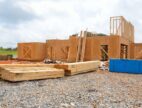Your Guide On Choosing And Installing Quality Commercial Flooring In Your Building
by Abdul Aziz Mondal Real Estate Published on: 01 May 2018 Last Updated on: 21 October 2024

$47.69 billion.
That’s how much the global commercial flooring industry will be worth come 2025.
That estimate also represents the massive increase in the flooring industry’s value in general.
From the 2016’s US $247.56 billion to US$429.25. That’s a jump of nearly twice as much in value!
But this huge shift shouldn’t be that shocking. After all, we all know how emerging trends always impact product design and functionalities.
And in commercial establishments where traffic is much higher than in the residential ones, design, and purpose – particularly for safety and productivity – are key elements of flooring.
So, now that the time has come for you to revamp your commercial building, you’re wondering how to choose the right flooring.
We’ve got you covered with this guide, so make sure you read on!
A Quick Overview of Commercial Flooring Changes :
Today’s commercial flooring types address the specific requirements of various industries. For instance, each one comes with its own acoustic, maintenance, energy efficiency, and safety features. Safety, in particular, has paved the way for many of these changes and improvements in flooring systems. Many businesses and commercial properties nowadays are beginning to Discover the Artistry and Functionality of Commercial Flooring. At the end of the day, commercial flooring is of huge importance to any business, it needs to provide the durability needed for heavy foot traffic while allowing for simple and easy maintenance.
After all, slips, trips, and falls are amongst the most common accidents worldwide. Especially in workplaces and high-traffic areas.
For instance, fall injuries cost the United States an annual US $70 billion in worker’s compensation and medical expenses alone.
In the United Kingdom, many employee injuries – most, in fact – result from slipping, tripping and falling. As many as 29% of non-fatal workplace injuries happen due to these accidents.
These numbers don’t even include the cost of legal liabilities. But they should be enough to make you realize how crucial choosing the right commercial flooring is to your business. And let’s not forget the system’s proper installation.
As a final note on this overview, keep these in mind:
There are about 5.6 million commercial buildings in the United States. In the United Kingdom, the 2015 value of all commercial properties combined amount to ? 871 billion. That’s how big the money behind non-residential establishments are.
This being said, a critical component to the success of your own building is ensuring it meets the ever-changing construction trends. Regardless of where your building is, it’s a must you learn from past structural mistakes and embrace flooring advancements.
And of course, make certain that only highly trained and experienced contractors carry out your commercial flooring installation.
Choosing the Right Flooring Means Factoring in Specific Facility Demands :
So… What’s in it for you when you choose the right flooring for your commercial establishment?
You can save a lot of time, effort, and resources in both the short and the long run. That’s what.
But this also means getting it right off the bat. As such, it’s vital you know which factors to consider.
First off, is the space you’ll lay the commercial flooring in. What exactly will you use it for? Is it for a school, a healthcare facility, or a hospitality business? Perhaps it’s for a retail business or maybe even a warehouse?
This is a very important question you need to answer. For the simple reason that the exact uses you have for the flooring dictates the specific type that you need to install. Even each room in your commercial establishment requires certain considerations.
Think non-slip in a kitchen. Anti-fatigue in the area where people stand for long periods of time.
Or aesthetically-appealing where guests lounge and relax in.
From there, consider traffic. High-traffic areas mean your floors will get a lot of use. So, durability and longevity are as important as comfort, ergonomics, and aesthetics.
Then, think about your own preference. Maybe you fancy carpet, perhaps hardwood flooring. There are even tiles or vinyl options for you to choose from.
How about color and finish? And don’t forget your budget. You want to meet all building codes and regulations, but you also want to keep things practical.
Thankfully, you’ll find so many great options today. And many of them make creating a safe environment easier than ever. Just take a look at these good quality commercial flooring options from the FLR Group.
Answering these questions is the first step in ensuring you make the right flooring choice. And of course, operating a high-performance and safe building for your tenants and visitors.
Function Over Form :
As consumer demands grow and increase, so do product innovations designed to meet such changes. That’s why you’ll find so many choices in the flooring market today. From traditional hardwood to luxury carpets to sleek porcelain tiles, there’s just a lot to pick from.
This doesn’t automatically mean you can interchange the materials or the installation though. In fact, it’s more important you review the functions of each and prioritize their uses over their appearance. Yes, you can mix and match them, but function should always take the lead over form.
In other words, you need to concentrate on the specific demands of your facility when choosing commercial flooring. Colors, patterns, and other design elements are important. But you should think about them after you’ve established that their specific kind meets, maybe even exceeds your requirements.
Energy Efficiency :
Just like how using solar energy benefits both residential and commercial consumers, the same goes true for quality commercial flooring.
That’s right. The type of flooring you choose for your commercial establishment can help you boost its energy efficiency.
For instance, there’s wood. It boasts of natural energy-efficient characteristics, not to mention its timeless, classic appeal. It’s because of these features that make it a great option for both residential and commercial establishments where comfort, vibe, and ambiance are important.
Their energy efficiency also helps keep buildings warmer during winter. In the summer, wood floors allow for easier cooling too.
Keep in mind that how energy efficient they still depend on a number of factors though. There’s the exact kind of wood, its thickness, quality of installation, and status of the sub-floor.
One more thing. Floor insulation is essential for the performance and comfort of your commercial establishment. As such, when choosing commercial flooring, also consider their compatibility with energy-efficiency boosters.
How’s the Traffic?
Another critical consideration in flooring for commercial facilities is traffic. This means how much use the floor will get every day, as well as the loads they’ll carry. This being said, you need to consider both material and installation durability and strength.
Other key considerations include maintenance and static-resistance. In sensitive environments, such as educational and healthcare facilities, look for flooring systems with anti-microbial properties.
Heat-welded vinyl is popular amongst healthcare facilities. But luxury vinyl tile (LVT) continues to garner interest.
Primarily due to how flexible it is and its availability in all sorts of shapes and sizes. The softer underfoot of rubber also makes for a wise choice, seeing as it offers reduced maintenance.
In office environments, many owners and facility managers opt for carpet tile. Not only are they flexible; they also offer exceptional acoustic performance. There’s also the numerous design opportunities they bring.
It’s for the same reasons you’ll also find the same flooring in schools. With carpet tiles’ noise-reducing effects, flexibility, and durability, they make a great choice for places needing quiet spaces.
Strong Footing :
Heavy foot traffic is a given in commercial spaces. But how about the loads – specifically the rolling ones – that put more stress on flooring systems?
Think heavy-laden carts in restaurants, hospitality establishments, and healthcare facilities.
Even in school cafeterias.
The key here is to make sure of the strong connection between the floor and the subfloor. This bond is what keeps the entire system in place. It makes all the difference between sagging, even collapsing floors.
Improved Function and Form :
You know how there are ways to sell residential properties faster? Many of them involve making small yet useful updates and changes, such as a fresh paint job and new fixtures. All these improvements, while low-cost, can improve a building’s livability, and thus, it’s value.
The same thing applies to the floor in a commercial establishment.
So long as you choose commercial flooring that addresses both function and form requirements, you can expect a considerable increase in your facility’s value. And while you may not have plans of selling the building, this is a huge consideration for your prospective tenants.
Installing it Right the First Time :
Preventing moisture-related problems is a huge challenge in the construction industry. The worst part is, these issues typically don’t make themselves noticeable right away.
Keep in mind that the installation of your commercial flooring can either keep these troubles at bay or give rise to them.
It’s for this reason you should work only with licensed, insured, and bonded contractors. For these flooring specialists to have all three, they should first pass rigorous testing. And passing means having the knowledge and skills to properly install flooring systems.
More than that, these experts know which floor is best for which situation. So, they can help you during the selection process to ensure high performance throughout its service life. And because these people have a reputation to take care of, you can expect only quality advice from them.
Up for more real estate property tips and tricks? We’ve got more of what you need. So, please feel free to browse our blog site!







































































































